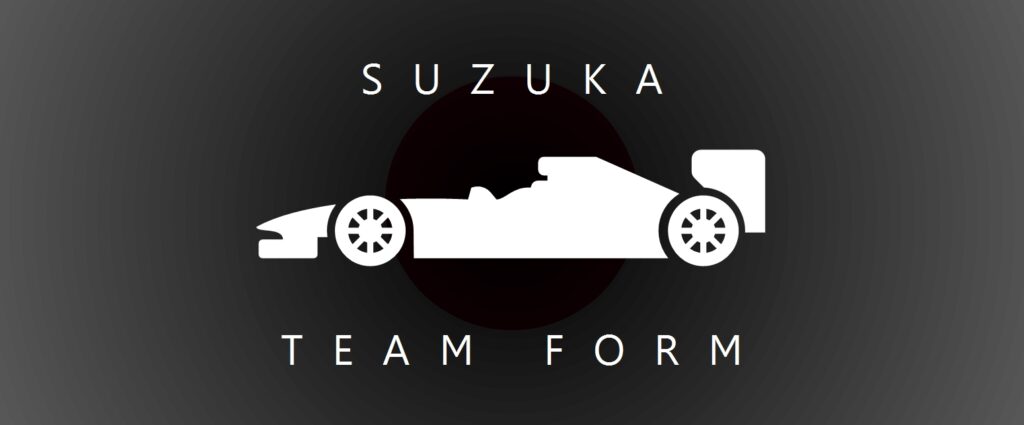
Red Bull have won the last three Suzuka races, while Mercedes won all six races at the track before 2022. Ferrari have not taken victory here since 2004, while the former Sauber team have gone the longest without scoring. Here’s everything you need to know about each team’s history at the Japanese Grand Prix!
McLAREN
WINS: 7, POLES: 4, PODIUMS: 24 | 2024 JAPANESE GRAND PRIX RESULT: NORRIS 5th, PIASTRI 8th
McLaren are tied with Ferrari as the most successful team at Suzuka, with Jenson Button recording the most recent win for the team here in 2011. In 2019, Carlos Sainz finished fifth at Suzuka, recording McLaren’s first points here since 2014, when Button also finished fifth.
In 2023, both Lando Norris and Oscar Piastri finished on the podium, recording McLaren’s first double podium at Suzuka since the 2003 Japanese Grand Prix.
The team has not recorded a DNF at the track since 2005, which is also the last time that they won at Suzuka, with Kimi Raikkonen taking victory on the final lap having started 17th on the grid.
1989 and 1990 are the only seasons in which both McLaren cars haven’t been classified in the result here. Ayrton Senna was controversially disqualified from the title-deciding race at the track in 1989, handing the title to team-mate Alain Prost.
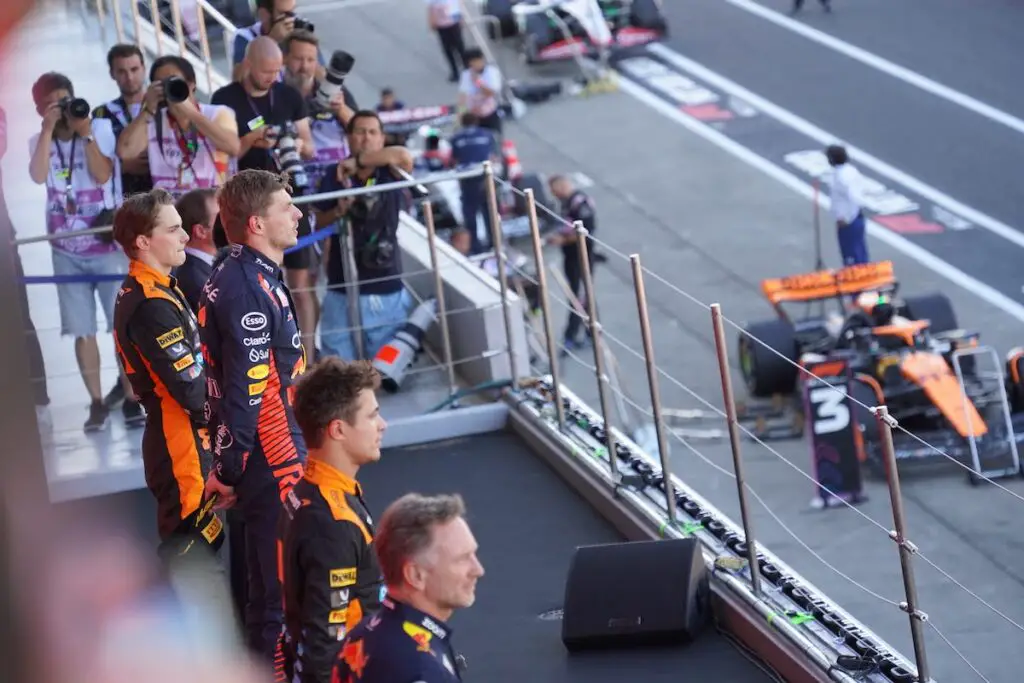
McLaren have taken pole position four times at Suzuka, all consecutively between 1988 and 1991. Since then, they have qualified on the front row only five times at the track, with Lando Norris’ second place in 2023 being their first front row start in Japan since 2011.
In 2019, both McLaren drivers reached Q3 at the Japanese Grand Prix for the first time since 2014. Between those two seasons, Fernando Alonso’s tenth place in qualifying in 2017 was the only time a McLaren driver has reached the final part of qualifying at the circuit – though the Spaniard started from the back of the grid following a 35-place grid penalty.
2018 is the only season that McLaren have recorded a double Q1 elimination here.
FERRARI
WINS: 7, POLES: 10, PODIUMS: 22 | 2024 JAPANESE GRAND PRIX RESULT: SAINZ 3rd, LECLERC 4th
Ferrari are currently tied with McLaren for the most victories at Suzuka, despite having not won a race here since 2004. The team won five races in a row at Suzuka between 2000 and 2004, but have had only eight podium visits in the 20 years since then.
Sebastian Vettel finished as runner-up in 2019, scoring the team’s first podium at the track since he finished third in 2015. Charles Leclerc finished third with Ferrari in 2022, while Carlos Sainz took the final podium position in 2024.
2014 marks the only time in the last 25 Suzuka races that Ferrari have failed to score, with their only other point-less visits to the track coming as a result of double DNFs in 1989, 1990 1993 and 1995.
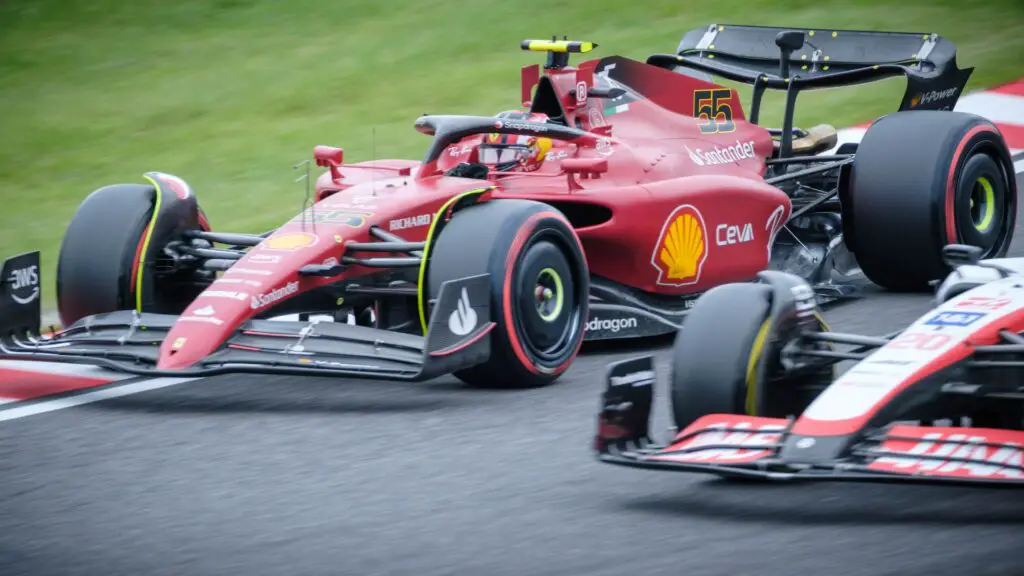
Ferrari have taken more poles than any other team at Suzuka, with nine in total. In 2019, the team took pole and locked-out the front row at the circuit for the first time since 2006. It was the first time either of their drivers had qualified on the front row here since 2006 – though Sebastian Vettel started from second in 2017 as a result of Valtteri Bottas’ grid penalty.
While Charles Leclerc started from the front row for the second consecutive Suzuka race in 2022, neither Ferrari driver has qualified in the top three at Suzuka in the last two years.
Since 2006, there have been only three occasions on which a Ferrari driver has failed to reach the final part of qualifying at the Suzuka circuit, while Giancarlo Fisichella recorded the team’s only Q1 exit here in 2009.
RED BULL
WINS: 7, POLES: 8, PODIUMS: 17 | 2024 JAPANESE GRAND PRIX RESULT: VERSTAPPEN 1st, PEREZ 2nd
In 2024, Max Verstappen secured Red Bull’s seventh Japanese Grand Prix victory. Between 2009 and 2013, Sebastian Vettel scored four wins for Red Bull at the Suzuka circuit. Verstappen has won in all of the last three years, including a victory in 2023 with which Red Bull secured a sixth Constructors’ Championship victory.
With Sergio Perez joining Verstappen in the top two at the 2024 Japanese Grand Prix, Red Bull recorded their fifth 1-2 finish at Suzuka, having also finished first and second in 2010, 2013, 2022 and 2023.
In the 14 years that F1 has visited Suzuka between 2009 and 2024, the 2015 and 2019 races are the only ones in which neither Red Bull driver has finished on the podium.
2006 and 2015 are the only years in which Red Bull have left Suzuka having not scored a point, while Verstappen’s DNF in 2019 was their first since David Coulthard’s retirement with gearbox problems in 2006. Perez recorded the team’s third DNF at Suzuka in 2023.
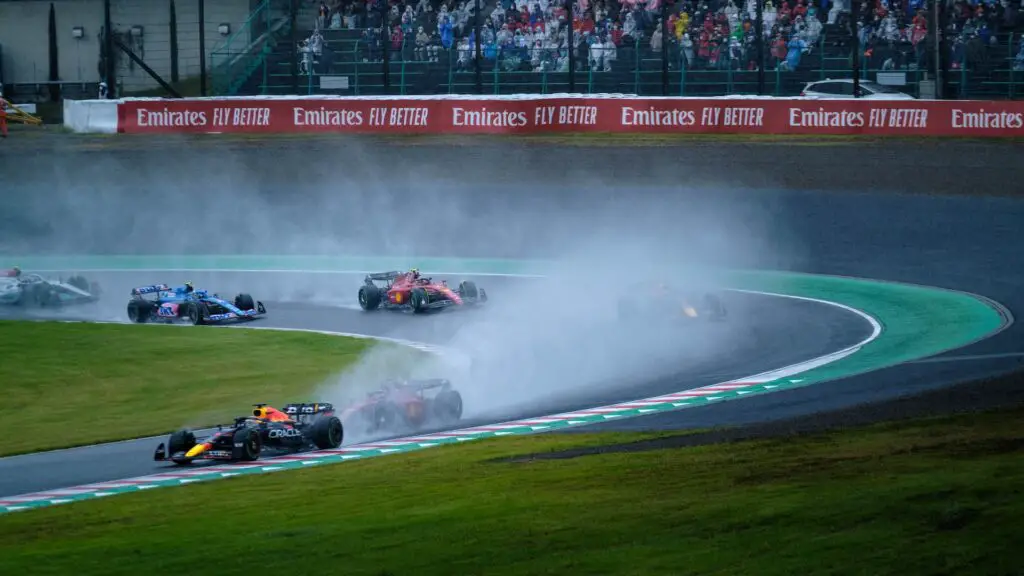
Max Verstappen’s pole at the 2022 Japanese Grand Prix was Red Bull’s first at Suzuka in nine years. He went on to start from the front of the grid again in both 2023 and 2024. With Sergio Perez qualifying second in 2024, Red Bull recorded their first front row lock-out at Suzuka since 2013. It was their fourth front row lock-out in total at the track.
In the last 13 Suzuka races, Daniel Ricciardo’s Q2 exit in 2018 is the only time a Red Bull driver has failed to reach Q3. The team took five consecutive pole positions at the track between 2009 and 2013.
MERCEDES
WINS: 6, POLES: 5, PODIUMS: 11 | 2024 JAPANESE GRAND PRIX RESULT: RUSSELL 7th, HAMILTON 9th
Mercedes won all six Japanese Grands Prix held between 2014 and 2019 and secured 1-2 finishes in 2014, 2015 and 2018. Valtteri Bottas’ fourth place finish in 2017 was the only time a Mercedes driver failed to finish on the podium at Suzuka in the hybrid era until 2022. In the last three races at the track, both Lewis Hamilton and George Russell have finished outside of the top four – though both drivers have picked up points in all three races.
Since Mercedes returned to the sport in 2010, 2012 is the only Japanese Grand Prix in which both Mercedes drivers have failed to score at the track, with Michael Schumacher finishing 11th and Nico Rosberg retiring. Rosberg’s crash in 2010 and Lewis Hamilton’s early exit from the 2013 race are Mercedes’ only other retirements here.
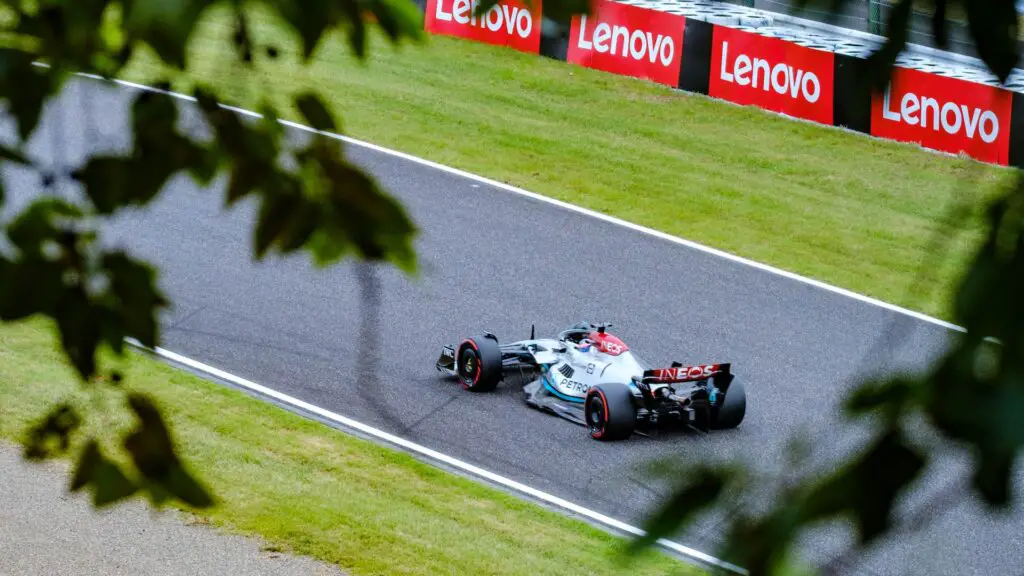
Mercedes locked-out the front row in qualifying at Suzuka for five successive seasons between 2014 and 2018 (although Bottas was demoted to sixth on the grid in 2017 due to a gearbox penalty). No Mercedes drivers have qualified on the front row at the track since 2018 and neither Hamilton nor Russell qualified in the top five in any of the last three seasons.
Qualifying seventh and ninth in 2024, Mercedes recorded their worst Suzuka qualifying result since 2012, when both drivers exited in Q1. That double Q1 exit in 2012 is the only occasion on which both of their cars have failed to reach the final part of qualifying at Suzuka.
The team’s only other non-Q3 appearance here came in 2011, when Nico Rosberg exited in Q1 after not being able to set a lap time due to technical difficulties.
ASTON MARTIN
WINS: 0, POLES: 0, PODIUMS: 0 | 2024 JAPANESE GRAND PRIX RESULT: ALONSO 6th, STROLL 12th
In five of the last nine Suzuka races, both of the Silverstone-based team’s cars have scored points at the Japanese Grand Prix. Force India’s double points finish at the circuit in 2015 was the team’s first double points finish at Suzuka since they were in their Jordan guise back in 1993.
Since 2013, the team have had only four non points-scoring entries into the Japanese Grand Prix. Three of those have been 12th place finishes (for Sergio Perez in 2014 and Lance Stroll in both 2022 and 2024), while Stroll retired from the race in 2023. That DNF is the team’s only non-finish here since their last double retirement at Suzuka in 2010.
The team has never finished above fourth here – and four sixth places (for Nico Hulkenberg in 2015, Esteban Ocon in 2017, Sebastian Vettel in 2022 and Fernando Alonso in 2024) are the only times this team has finished in the top six here since the end of Eddie Jordan’s tenure at Team Principal.
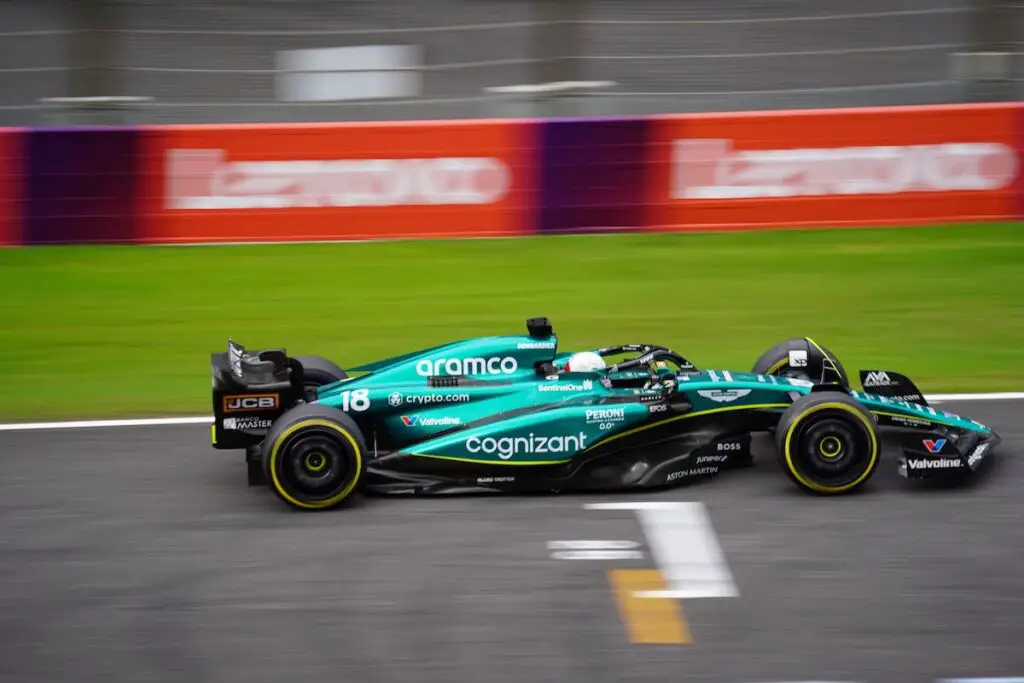
The Silverstone-based team has reached Q3 with at least one car in all but one Suzuka race between 2015 and 2024, the exception being in 2019. The team reached Q3 with both cars in 2016, 2017 and 2018.
Heinz-Harald Frentzen and Adrian Sutil’s fourth places here for Jordan in 1999 and Force India in 2009 respectively remain the team’s best qualifying showing at the track. Fernando Alonso recorded the team’s best qualifying result since then in 2024, with fifth place.
In 2019, Lance Stroll recorded the Silverstone-based team’s first Q1 exit at the track since 2013. While his team-mate has reached Q3, Stroll has exited in Q1 in all of the last three seasons at the track.
ALPINE
WINS: 0, POLES: 0, PODIUMS: 0 | 2024 JAPANESE GRAND PRIX RESULT: OCON 15th, GASLY 16th
The Enstone team has won at Suzuka four times, under their Benetton and Renault guises. They won here in 1989, 1990, 1995 and 2006. Both Renault drivers finished on the podium in 2005 too, with Giancarlo Fisichella losing the lead to Kimi Raikkonen on the final lap of the race.
Since the team’s last win here in 2006, Romain Grosjean’s third place finish for Lotus in 2013 is the Enstone team’s only podium result at the Suzuka circuit.
In the team’s more recent history, Alpine scored points with both drivers in both 2022 and 2023 but failed to pick up any points in the 2024 Japanese Grand Prix. It was the first time since 2017 that neither of the team’s drivers finished in the top ten on the road at Suzuka – though in 2019, both Renault drivers were disqualified from the race after illegal driver aids were found on their cars.
The team recorded one DNF in both 2017 and 2018, while 2010 was the first time since 1993 that both of their cars have failed to finish the event.
The Enstone team have recorded pole position at Suzuka twice – both thanks to Michael Schumacher, in 1994 and 1995.
In 2022, both drivers reached Q3. Those are the team’s only Q3 appearances at Suzuka since 2015. While Q3 appearances have been rare in recent years, the team has only ever recorded a double Q1 elimination once, in 2014.
HAAS
WINS: 0, POLES: 0, PODIUMS: 0 | 2024 JAPANESE GRAND PRIX RESULT: HULKENBERG 11th, MAGNUSSEN 13th
From their seven visits to Suzuka so far, Haas have scored in two races, including with both cars in 2017. A Haas driver is yet to finish above eighth here, with Kevin Magnussen and Romain Grosjean each finishing in that position in 2017 and 2018 respectively.
Magnussen recorded the team’s first, and so far only, DNF at the circuit in 2018. Both cars finished without scoring five times – in 2016 and in all of the last four Suzuka races.
In their first Japanese Grand Prix appearance, Haas reached the final part of qualifying with both cars. It’s a feat that they have failed to repeat since, though Romain Grosjean recorded the team’s best qualifying position here so far in 2018 with fifth and he reached Q3 again in 2019, qualifying tenth.
Haas have recorded five Q1 exits at the circuit – including one in each of the last four Japanese Grand Prix weekends. Grosjean was eliminated in Q1 at the track in 2017, Kevin Magnussen was out in Q1 in 2019 (when he failed to set a lap time after crashing out in Q1), 2022 and 2024, and Nico Hulkenberg exited in Q1 in 2023.
RACING BULLS
WINS: 0, POLES: 0, PODIUMS: 0 | 2024 JAPANESE GRAND PRIX RESULT: TSUNODA 10th, RICCIARDO DNF
In 2019, Pierre Gasly finished seventh in the Japanese Grand Prix. It marked the first time that a driver for the Red Bull junior team had finished above ninth place at the Suzuka circuit. With Daniil Kvyat also finishing tenth, it was the second time that both of the team’s cars have finished in the points at the track.
The only other time both drivers have scored was in 2015. Yuki Tsunoda picked up the team’s first point at Suzuka since 2019 with a tenth place finish in the 2024 Japanese Grand Prix.
2009 is the only season in which both of the team’s drivers have failed to reach the end of the race. The team has recorded only four other DNFs at the circuit. Daniel Ricciardo’s first lap exit in 2024 was the team’s first non-finish at the Japanese Grand Prix since 2017.
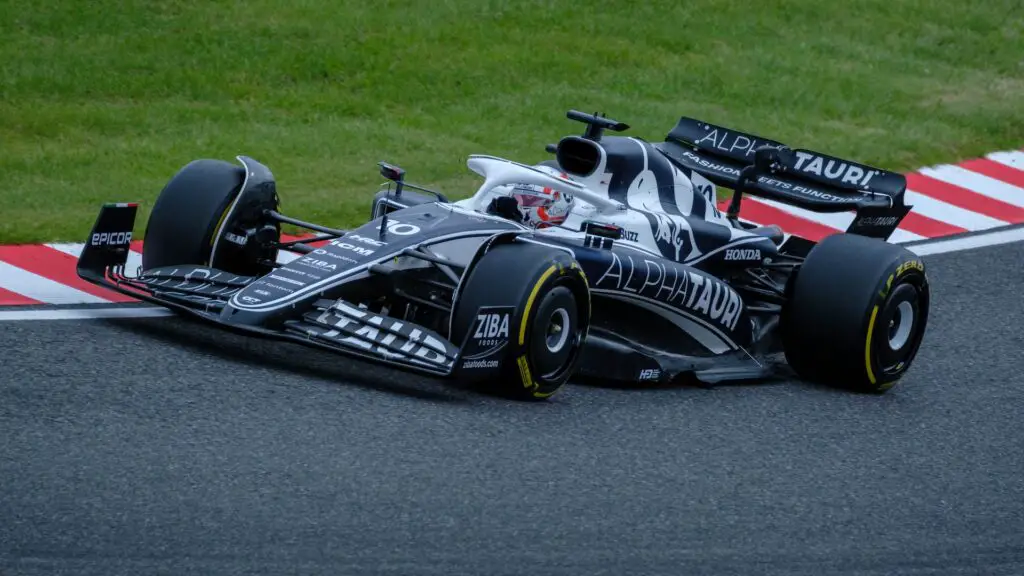
The Red Bull junior team has recorded Q3 appearances at five Suzuka race weekends; four of those times being in the last five races here. 2018 saw both Toro Rosso drivers reach the final part of qualifying at Suzuka for the first time in the team’s history. Before that, Sebastien Buemi was the only other Toro Rosso driver to have reached Q3 at the track, having done so in 2009. Pierre Gasly qualified ninth in 2019, while Yuki Tsunoda has reached Q3 in the last two years, qualifying ninth in 2023 and tenth in 2024.
With sixth on the grid in 2018, Brendon Hartley is the team’s best qualifier so far at the circuit.
WILLIAMS
WINS: 3, POLES: 4, PODIUMS: 10 | 2024 JAPANESE GRAND PRIX RESULT: SARGEANT 17th, ALBON DNF
In 2022, Nicholas Latifi finished ninth in the Japanese Grand Prix, scoring Williams’ first points at Suzuka since 2017. The team won at the track three times during the 1990s, and have taken ten podium finishes, their most recent being with Ralf Schumacher in 2004.
The team has recorded at least one DNF at Suzuka in all of the last three seasons. 1987, 1995 and 2023 are the only occasions on which neither Williams driver has reached the end of the race at Suzuka. Before 2023, Lance Stroll’s DNF in 2017 and Alex Albon’s first lap exit in 2022 were Williams’ only retirements in the previous ten at the circuit. Albon recorded another first lap retirement at Suzuka in 2024.
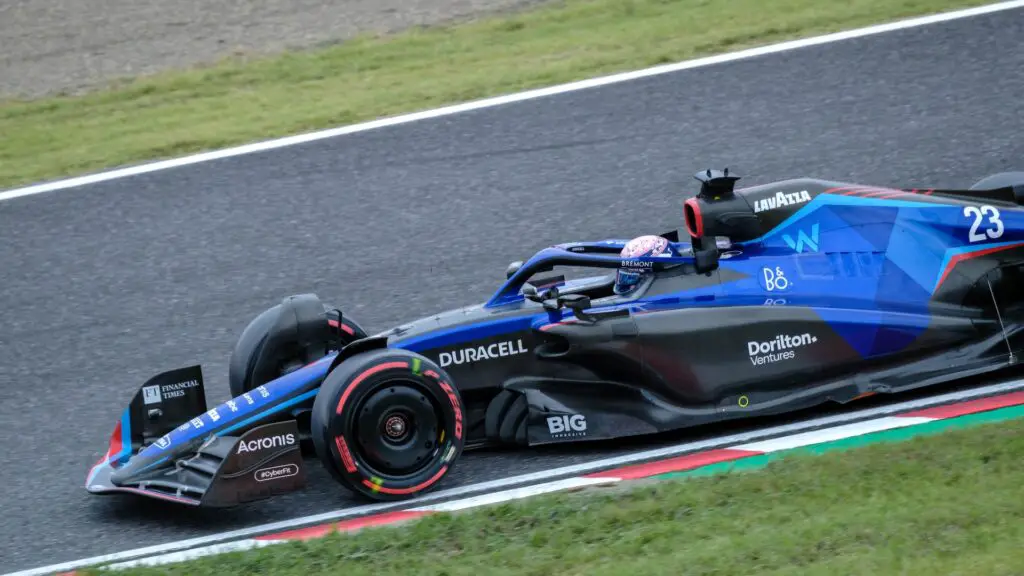
Williams have taken four pole positions at Suzuka, and locked-out the front row in 1992 and 1996. 2010, 2014 and 2015 are the only years where both Williams drivers have reached the final part of qualifying here, with Valtteri Bottas qualifying in third for the team in each of the latter two years.
At least one Williams car has been eliminated in Q1 in all of their last six visits to the track. 2019 marked the first time that both Williams were out in Q1 at the circuit. Both drivers were also out in Q1 in 2022.
SAUBER
WINS: 0, POLES: 0, PODIUMS: 0 | 2024 JAPANESE GRAND PRIX RESULT: BOTTAS 14th, ZHOU DNF
The Sauber team has not scored at the Japanese Grand Prix since 2013. Kamui Kobayashi scored a popular home podium with Sauber in 2012, which is the team’s only top three finish so far at the circuit. The team have managed a best of only 12th in the last nine Suzuka races and have recorded six DNFs during that time.
2012 is the only season in which both Sauber drivers have reached the final part of qualifying at the Suzuka circuit, while Heinz-Harald Frentzen recorded the team’s best qualifying here with third on the grid back in 1994.
Just like points, Q3 appearances have been hard to come by for Sauber in recent seasons. They have not appeared in Q3 here since 2013. Charles Leclerc reached Q2 with Sauber in 2018, becoming the first driver for the team to not be eliminated in the first part of qualifying for the Japanese Grand Prix since 2014.
2023 marked the team’s first double Q1 exit at the Japanese Grand Prix since 2017.
